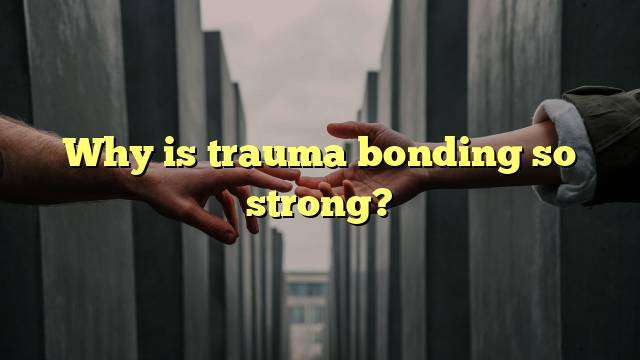Trauma Bonding: Exploring the Power of Emotional Abuse
When we think of abuse, our minds often jump to physical violence. While physical violence certainly has its place in the realm of abuse, it is far from the only form of abuse. In fact, emotional abuse can be even more damaging to a person’s psyche, self-esteem, and identity. This is especially true when it comes to the phenomenon known as trauma bonding.
What is Trauma Bonding?
Trauma bonding is a powerful psychological phenomenon in which an abuser and a victim become emotionally connected, even after the abuse has ceased. It is a form of Stockholm Syndrome, in which victims feel a strong sense of loyalty towards their abuser. This bond is often reinforced through a cycle of being devalued and then rewarded, which creates a powerful chemical and hormonal bond between the two.
How Does Trauma Bonding Work?
The cycle of emotional abuse works in such a way that the victim is made to feel worthless and undeserving of love, only to be rewarded with small acts of kindness or emotional validation. This creates a powerful bond between the abuser and the victim, as the victim becomes dependent on the abuser for their emotional and psychological needs.
The cycle of being devalued and then rewarded over and over works overtime to create a strong chemical and hormonal bond between a victim and their abuser. Victims of emotional abuse often describe feeling more deeply bonded to their abuser than they do to people who actually consistently treat them well. This complex bond is extremely difficult to break, even when the victim is aware of the abuse and is actively trying to remove themselves from the situation.
The Effects of Trauma Bonding
The effects of trauma bonding can be devastating, both in the short and long term. In the short-term, the victim is often left feeling confused and betrayed by the abuser, unable to understand why they were treated so cruelly after feeling so connected. In the long-term, the effects can be even more damaging. Victims of trauma bonding may experience anxiety, depression, and low self-esteem, all of which can lead to serious long-term issues.
Breaking the Cycle of Trauma Bonding
Breaking the cycle of trauma bonding can be extremely difficult, but it is not impossible. The first step is to recognize the signs of trauma bonding, such as feelings of loyalty towards the abuser despite their mistreatment and feelings of confusion when the abuser alternates between kindness and cruelty.
Once the victim recognizes the trauma bond, it is important to seek professional help. Therapy can be an invaluable tool in helping victims of trauma bonding to break the cycle and gain the strength and confidence they need to move on with their lives.
Conclusion
Trauma bonding is a powerful psychological phenomenon in which a victim and abuser become emotionally connected, even after the abuse has ceased. It is a form of Stockholm Syndrome, in which victims feel a strong sense of loyalty towards their abuser. This bond is often reinforced through a cycle of being devalued and then rewarded, which creates a powerful chemical and hormonal bond between the two. Breaking the cycle of trauma bonding can be difficult, but with the help of a professional therapist, it is possible to gain the strength and confidence needed to move on from the trauma bond and heal.



